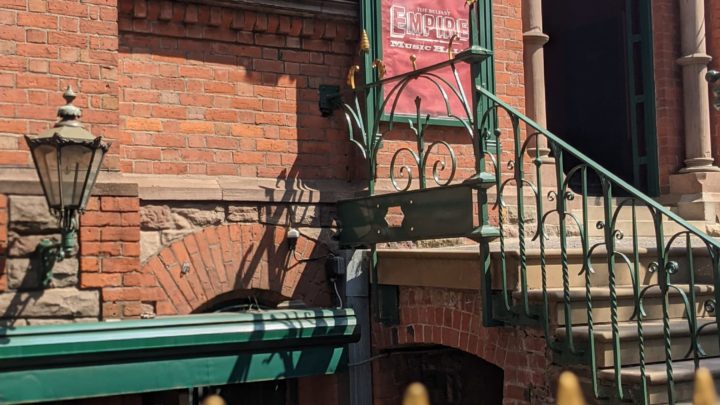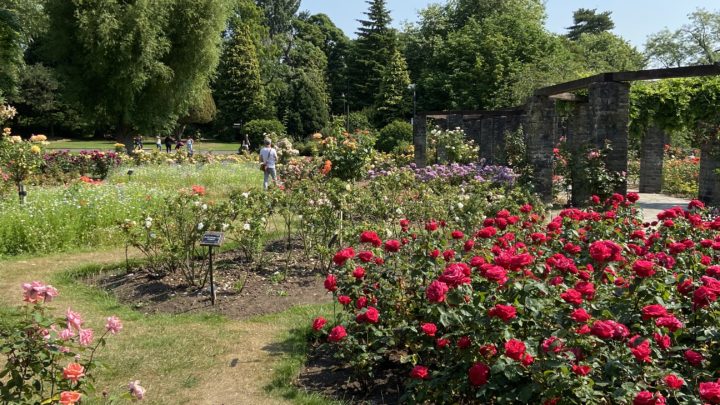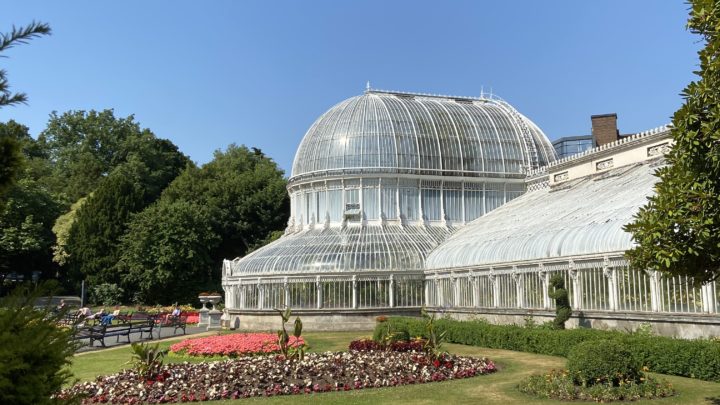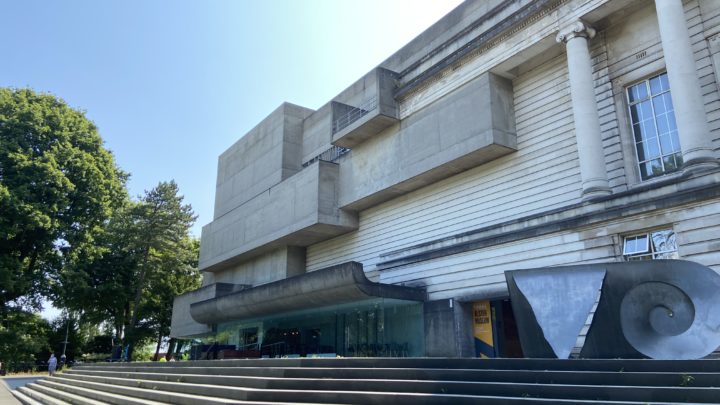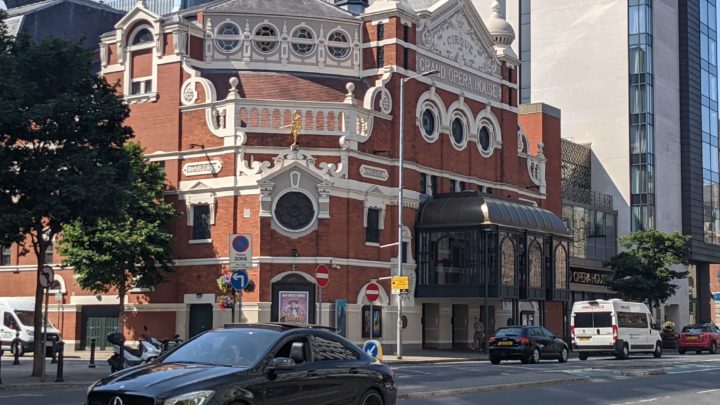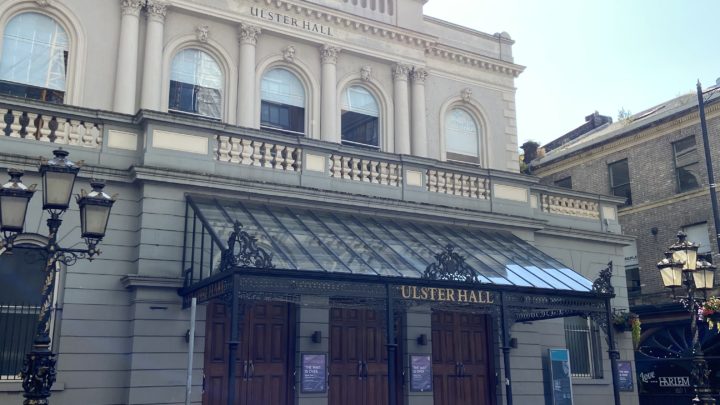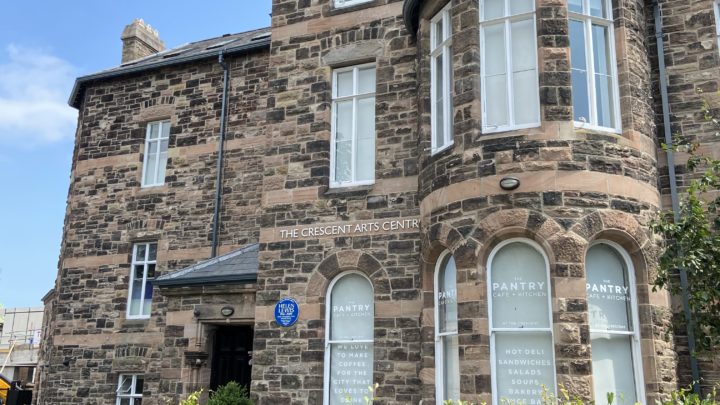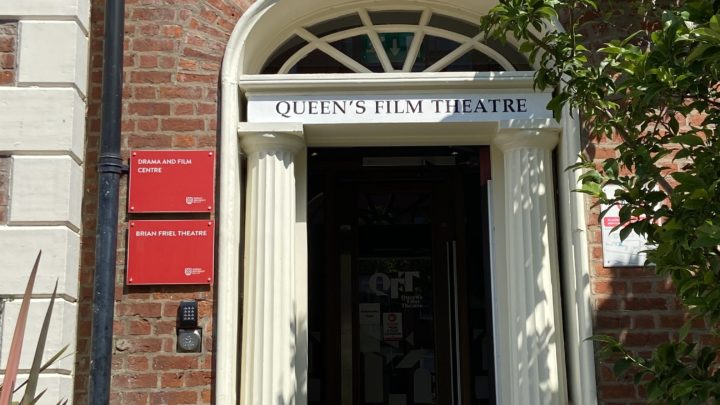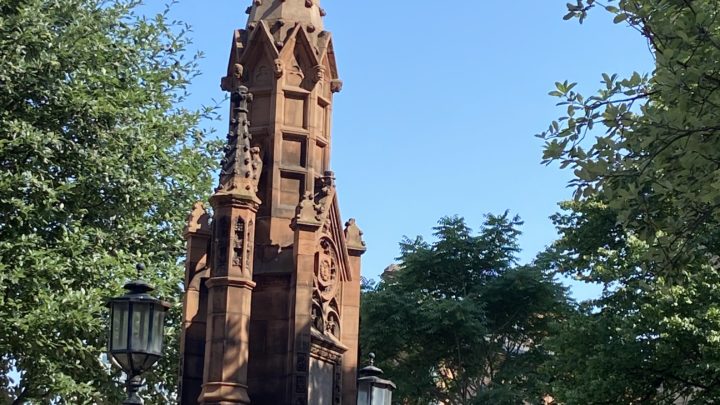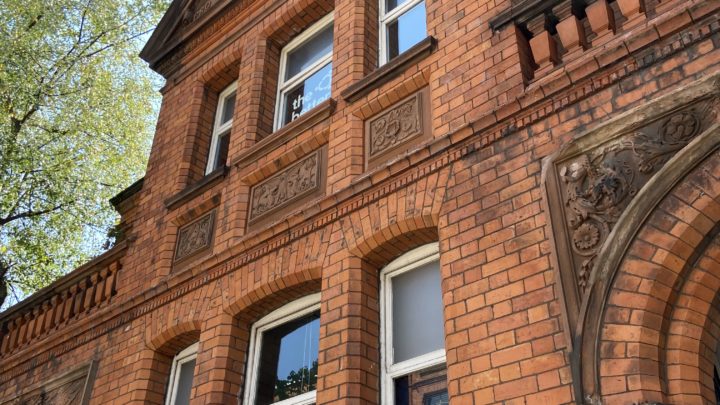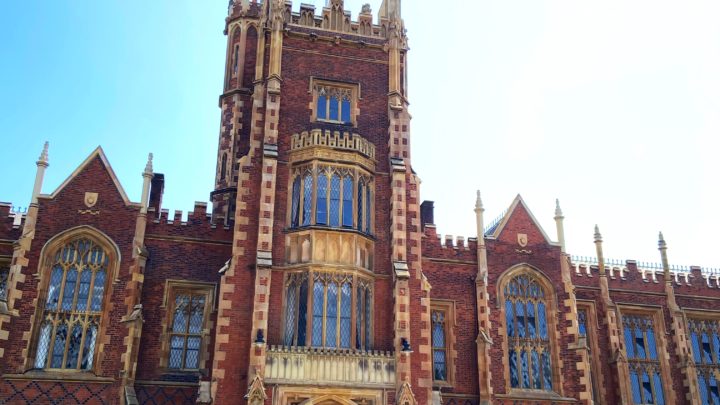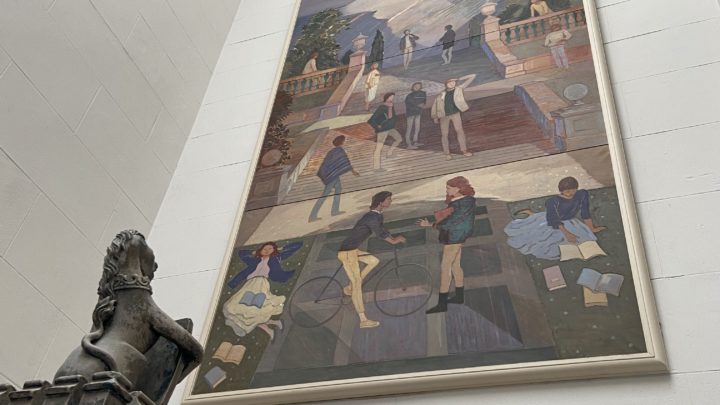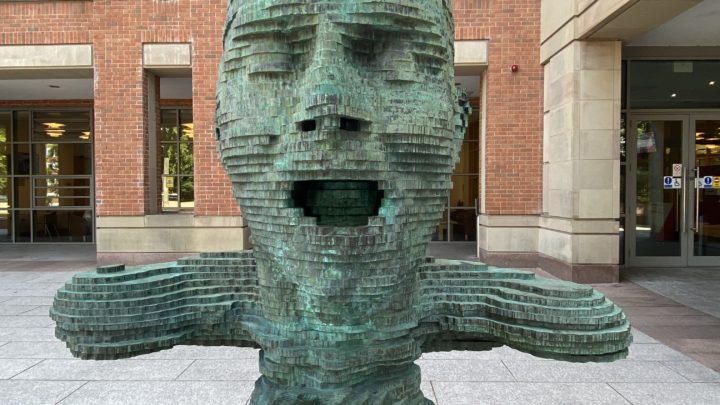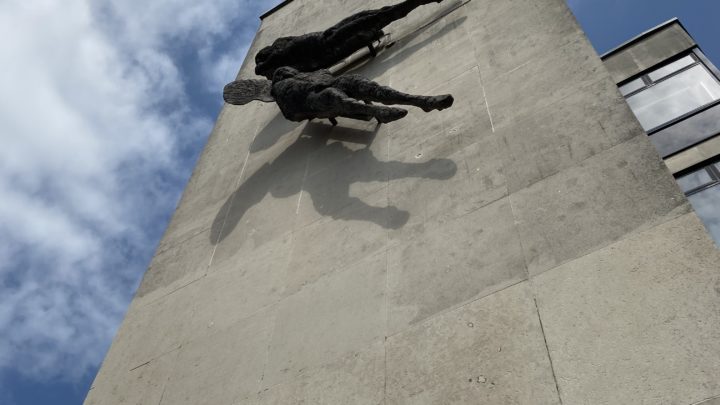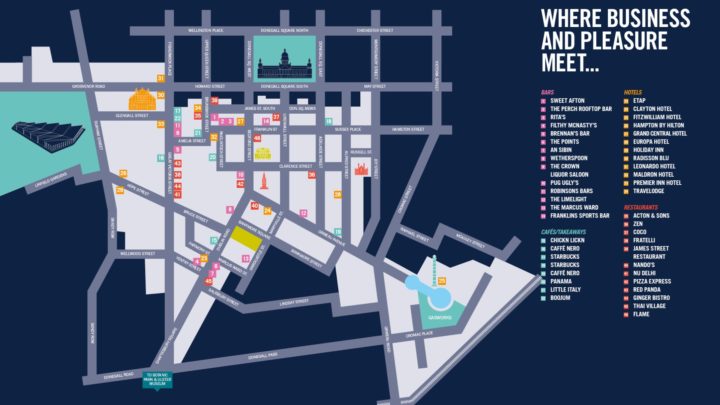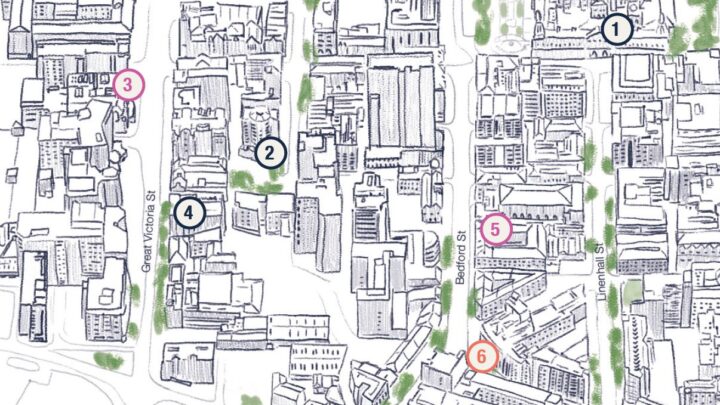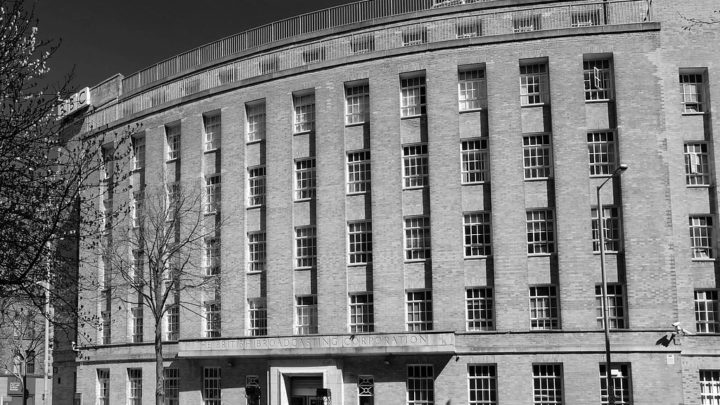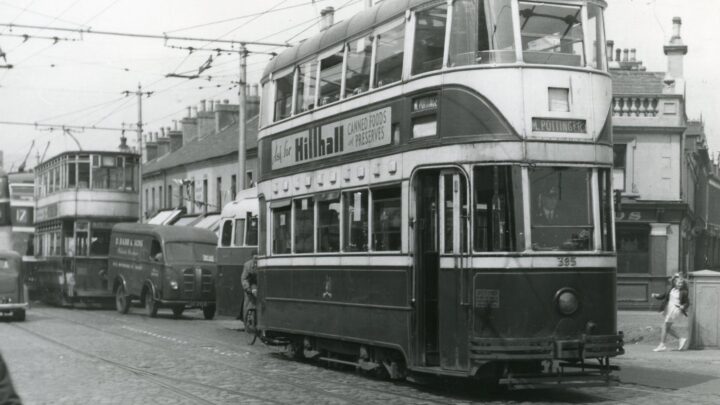Golden Mile
The Golden Mile - Things to do in Belfast
Whether it’s enjoying a night on the town in one of our many bars and restaurants, or taking the family out for an incredible day of history, culture and arts, there are so many things to do in Belfast.
When you visit any city, it can be overwhelming trying to find the best attractions.
In Belfast, we’re lucky that many of our top tourist destinations are located along the Golden Mile Walking Trail. This historical walk takes you through some of the most important sites of Belfast, from its industrial heritage, right up to the present day.
Let the Golden Mile guide you through the best of what Belfast has to offer, no matter your tastes.
Best Bars in Belfast
Belfast is famed around the world for its vibrant nightlife. From historical pubs, to youthful night clubs, our hospitality venues are amongst the best in the world. After a long day of exploring the city, there’s no better way to unwind than with a cold drink and a warm welcome in one of our many bars.
Flax @ Linen Quarter (Opening March 2022)
Flax @ Linen Quarter is a new outdoor hospitality, entertainment and recreation space in the heart of the city centre. With outdoor seating for up to 180 guests, and a wide selection of alcoholic and non-alcoholic drinks at the bar, it’s the ideal place to catch up with friends.
Enjoy live music and entertainment, or indulge your competitive side with a game of French Boules. During the day, Brunswick is ideal for families, with activities such as ring-toss and corn hole.
Flax @ Linen Quarter is at the heart of one of the city’s most vibrant entertainment districts, neighbouring a number of other popular bars, including Sweet Afton, The Perch, and Franklin’s Sports Bar.
The Crown Liquor Saloon
Opened in 1826, the Crown Liquor Saloon is undoubtedly one of the most iconic bars in Belfast. Having initially opened to take advantage of Great Victoria Street railway station across the road, it harkens back to an age of Victorian grandeur and elegance.
Today, the Crown is firmly on the tourist trail, attracting visitors from all over the world to have an authentic Irish pub experience.
The interior is distinctive, with ornate tiling and gilded wooden structures throughout. The crown is also famed for its ten ‘snug’ booths, each with its own bell for summoning service, which are preserved just as they were almost 200 years ago.
This has led the Crown to play a starring role in countless films over the years, including 1998’s Divorcing Jack and 1947’s Odd Man Out.
The Crown is the ideal place to try traditional local favourites, like Irish whiskeys or a pint of Guinness, all while soaking up its unique ambience.
The Empire Music Hall
For something a little bit livelier, look no further than the Empire Music Hall on Botanic Avenue. Set in a 19th century church, the Empire, as locals call it, has been home to live music and comedy in Belfast for the past three decades.
The downstairs bar draws heavily on vaudeville music halls of a bygone age, as well as featuring a number of artefacts from Belfast’s maritime past. With a selection of dining options, and a wide variety of craft beers and spirits, the Empire is a haven for lovers of the finer things in life.
Upstairs, you’ll find a large, ballroom-style music venue, complete with dark woods and winding staircases. In the Empire’s rich history, it’s stage has been graced by acts as diverse as REM, Van Morrison and Snow Patrol.
With live rock, blues, folk and traditional music throughout the week, as well as the famous Empire Comedy Club, the bar is an excellent place to see Belfast’s next superstars, before they make it big.
Things to Do in Belfast with Kids
Belfast is filled with incredible days out for families with kids of all ages. Come rain or shine, there is always something to keep the little ones entertained, across Belfast’s many parks, museums and other attractions
Crescent Gardens Park
Set just off the bustling Botanic Avenue, the Crescent Gardens Park is the perfect place for a bit of quiet time with the family. The park is surrounded by some of Belfast’s finest Georgian architecture.
On a warm day, there are few finer places to settle in for a family picnic, or have a quick coffee from one of Botanic Avenue’s many artisanal cafes, to perk you up for the next stop on your journey through Belfast.
Botanic Gardens
Located just behind Queen’s University’s main campus, Botanic Gardens is a popular outdoor destination for students, young professionals and families alike. There is much to explore across the extensive grounds, including a bowling green, Japanese gardens, and rose planters.
Botanic Gardens is centred around a large open field, which catches the sun beautifully, making it the perfect spot for family activities and games, or just a little bit of sun bathing.
At the far end of the park, you’ll also find a play-park, with swings, slides and climbing frames for younger children. Throughout the year, Botanic Gardens hosts a number of outdoor art exhibitions and other visual attractions.
The Palm House and Tropical Ravine
Located inside Botanic Gardens, you’ll also find the Palm House and Tropical Ravine. Built in the mid-19th century, the Palm House is one of the finest examples of a Victorian iron glasshouse anywhere in the UK.
Across its two wings, you’ll find a range of rare and unique tropical plant species from around the world. Children will love stepping into its warm and humid environment, and marvelling at the wide variety of shapes and colours of the plants.
The recently renovated Tropical Ravine was originally opened in 1889 and now hosts a range of rare tree, shrub and seed plant species. It’s combination of modern and late Victorian architecture create a unique experience for all guests.
The Ulster Museum
The Ulster Museum is one of the best family days out in Belfast. With an extensive collection of historical, scientific and artistic works, it is the ideal setting to help your kids spark a love of learning, which will last a lifetime.
Opened in 1929, the Ulster Museum has been a firm family favourite for generations.
Children of all ages will love the chance to get to know Belfast’s history, as well as experience ages-gone-by, with permanent exhibitions on the universe, dinosaurs, ancient Egypt, the Vikings, and much much more.
Take advantage of one of the specially designed self-guide tours for children, with a series of arts and quiz activities based on the exhibitions around the museum. Afterwards, settle down in the museum’s cafe, to reflect on what you’ve learned.
Live Events and Theatres in Belfast
The Golden Mile is at the heart of Belfast’s thriving music, performance and theatre scenes. From classics like Shakespeare, to international touring acts, and local upcoming talent, there is something for everyone in Belfast’s live events industry.
The Grand Opera House
Since 1895, the Grand Opera House has been a part of the itinerary of countless international theatre companies, musicians and other performers. In that time, it has brought laughter, tears, and applause to the people of Belfast.
The opulent Victorian building features an elegant atmosphere, and unrivalled acoustics. It is nearing the end of a major refurbishment, which will allow the Opera House to be enjoyed for generations to come by artists and revellers alike.
It was also Northern Ireland’s first listed building.
Its stage has been graced by international legends like Laurel and Hardy, as well as a host of local favourites, such as the Hole in the Wall Gang and May McFettridge. On reopening in Autumn 2021, there will also be an extensive museum on the site, dedicated to the Grand Opera House’s rich and varied history.
Ulster Hall
It’s no understatement to say that Belfast is a city of music lovers. For many, the Ulster Hall is at the heart of this passion for music. Originally built as a ballroom in 1862, it is perhaps the city’s most iconic live venue.
In fact it has hosted performances from artists as diverse as Edward Elgar, the Rolling Stones, and U2. During the Troubles, when few touring acts would come to Belfast, local blues hero Rory Gallagher’s annual Christmas shows helped bring hope to the people of the city.
The Ulster Hall also has the honour of being the site of Led Zeppelin’s first live performance of their classic, Stairway to Heaven.
It is also unique among music venues, for the key role it has played in local history over the past two centuries, having hosted political rallies of various leaders, including home rule advocate, Charles Stewart Parnell, and David Lloyd George, the British Prime Minister.
Accidental Theatre
Of course, in the 21st century, Belfast’s live events and theatre scene continues to grow and evolve. Spurned on by local artists and innovators, Belfast hosts a range of amazing theatre shows throughout the year.
The Accidental Theatre is the centre for this busy activity.
Located on the corner of Shaftesbury Square and Botanic Avenue, the building hosts a theatre space, cafe, bar and recording facilities. It’s also one of the city’s most Instagrammable locations, with its famous yellow door, and cosy bookshop.
Crescent Arts Centre
Housed in a former 19th century school for girls, the Crescent Arts Centre runs a busy calendar of events, festivals, exhibitions and classes throughout the year, with offerings for people of all ages and tastes.
The Centre was founded in 1980 with a view to bringing arts and culture to the centre of local community life. Home to more than ten different creative companies, the centre of its busy program is the annual Belfast Book Festival.
The Crescent Arts Centre is also home to one of Queen’s Quarter’s best loved cafes, with indoor and outdoor seating, it is an idyllic place to settle in with a book, or admire some of Belfast’s finest Victorian and Georgian Architecture.
Queen’s Film Theatre
Set in a Victorian terrace house on University Square, the Queen’s Film Theatre, or QFT for short, has been one of Belfast’s leading cultural hubs for almost half a century. It was set up in 1968, with a mission of bringing independent and art house films to the city.
In an age of Hollywood blockbusters and superhero movies, the QFT caters to a slightly different taste. From cult favourites to all-time classics, its program is ideal for all kinds of cinephiles.
The QFT also features accessible screens, and an in-house bar area, making it the perfect place for movie lovers to unwind and discuss what they’ve just experienced on the silver screen.
It hosts a number of events and festivals throughout the year aimed at children and adults alike, including the Belfast Festival, Belfast Film Festival and CineMagic.
Historical Sites on the Golden Mile
The Golden Mile Walking Trail offers an incredible journey through Belfast’s rich history, from a Victorian industrial powerhouse right up to the present day. The trail is dotted with architectural gems and historical sites, which might go unnoticed to untrained eyes.
Here are some of the top historical sites and things to do in Belfast.
Belfast City Hall
Belfast officially became a city when it was granted the Royal Charter by Queen Victoria in 1888. To celebrate this, a new City Hall was commissioned, and opened at the bottom of Donegal Place in 1906.
Many locals are surprised to learn that the City Hall is just over 100 years old. Built in the Baroque revival style, with white stone columns, it harkens back to an earlier age, in order to emphasise Belfast’s important status as an economic centre in Victorian Britain.
The City Hall’s manicured lawns are a popular meeting space for local office workers and students, enjoying an al fresco lunch, ice cream or coffee. The grounds also host a variety of memorials and statues, including a special garden dedicated to the victims of the disastrous sinking of the Titanic.
Inside the City Hall, you’ll find a museum dedicated to Belfast’s social, political and economic history. It’s also the home of Belfast City Council, with tours of the council chambers giving an insight into modern politics.
The Thomas Thompson Fountain
Belfast has a rich history of scientific and medical innovation, throughout the centuries. In fact, we’re proud to have produced some of the world’s leading pioneers in this field. Thomas Thompson is undoubtedly one of Belfast’s most important sons.
Thompson was a surgeon with the Royal Navy during the Napoleonic Wars in the early 19th century. He later founded the ‘Home for Incurables’, an infamous cholera hospital in Victorian Belfast.
He practiced throughout the Great Famine of the 1840s, and subsequent epidemics, easing the suffering of countless of the city’s poorest and most destitute residents.
After Thompson’s death, a memorial fountain was erected on the corner of Bedford Street, the Dublin Road and Ormeau Avenue, as a fitting memorial, with its clean waters symbolising the hope and respite that Thompson brought to his many patients, in the face of ill-health.
Ormeau Baths
The Ormeau Baths are the perfect example of the people of Belfast looking to the future, while maintaining strong links with their heritage. The ornate Victorian building opened in 1880 to provide bathing facilities to the city’s residents, improving public health greatly.
At this time, many of the residential properties in the South Belfast area lacked their own sanitary facilities. It’s one of only two surviving Victorian bathhouses in the city.
Today, the Ormeau Baths are at the centre of Belfast’s creative and technology industries, hosting a variety of media, technology and digital start-ups. It’s the beating heart of Belfast’s youthful and innovative technology sector.
Of course, where you have start-ups, you’re bound to find youthful and modern hospitality. The Bath’s onsite cafe, Napoleon, is a haven for lovers of artisan coffees and pastries. With al fresco dining, it’s the perfect location for people watching in the heart of Belfast City Centre.
Things to do at Queen’s University Belfast
Many of the most iconic things to do in Belfast centre around Queen’s University. For over 200 years, it has been a centre of learning, culture and recreation in the South Belfast area. Today, many of its historic campus buildings are tourist attractions in their own right.
Queen’s Lynne Building
Originally built as one of the most picturesque university libraries in the UK or Ireland, the Queen’s Lynne Building is an impressive, neo-Gothic gem, dating back to 1864. Today, it is one of the most visited sites on the main university campus.
Architecturally, both the interior and exterior bear a striking resemblance to churches built in the same period. The architect, William Henry Lynne, is thought to have wanted to create a chapel for the church, without breaching the university’s non-denominational policy.
After a thorough restoration project, the Lynne Building reopened in 2015, housing the Queen’s Graduate School. Today it is a hub of activity, providing a space for over 6,600 post-graduate students, from eighty different countries.
The Graduate School is open to members of the public, to marvel at its many gargoyles and arches, or simply soak in the busy hustle and bustle of its academic atmosphere. Next door, the Main Site Tower’s cafe provides a range of breakfast, lunch and snack options, which are perfect to enjoy on the forecourt of the Lynne Building.
The Lanyon Building
The Lanyon Building at Queen’s University is one of Belfast’s most iconic and best-loved pieces of architecture. Completed in 1864, it was designed by Charles Lanyon, borrowing heavily from the great Medieval universities, including Magdalene College, Oxford.
It’s striking red brick towers and arched windows are often compared to Hogwarts, making the Lanyon Building one of Belfast’s most popular locations for a photo opportunity.
Although it’s still in use as a teaching facility, today the Lanyon also hosts a range of incredible attractions for local and international tourists. Walk through its surrounding lawns, or relax in the quad, watching busy students come and go.
The Great Hall, in the Lanyon’s southern wing is used for functions and events throughout the year, but you can visit to admire some of the University’s extensive collection of portraits.
The Lanyon Building is the beating heart of the Queen’s Quarter, with countless bars, restaurants and cafes on its doorstep, making it the perfect starting point to enjoy Belfast’s rich student nightlife.
Public Art and Galleries in Belfast
As a creative city, Belfast is dotted with excellent galleries and works of public art. Take the chance to take in works by some of the top local and international artistic talents, and other things to do in Belfast, along the Golden Mile Walking Trail.
Naughton Gallery
House on the first floor on the Queen’s Lanyon Building, the Naughton Gallery opened in 2001, showcasing the University’s rich collection of artworks, which it has accumulated over the last two centuries.
The Gallery also regularly displays works which are on loan or borrowed from other institutions and galleries. Today, it’s one of the top things to do in Belfast for art lovers.
With free entry to the public, six days a week, the Naughton Gallery is recognised as one of the leading university art galleries in the UK or Ireland. You can expect a rolling exhibition, taking in a range of local and international contemporary artists, working in a variety of visual media.
ECO
ECO is the perfect example of art and science coming together to create a truly stunning piece. Acquired in 2008 to mark Queens’ centenary and the opening of the McClay Library, Mark Didou’s ECO is a 2.5m bronze sculpture, reflecting on the rise of medical imaging technology.
The artist himself undertook an MRI scan, in order to better understand the experience of patients. The piece depicts a head refracted in water, creating a thought provoking visual effect.
ECO can be found in the courtyard of the McClay library, surrounded by extensive outdoor seating, to reflect on and enjoy the work.
Flying Figures
Walking the Golden Mile is one of the most popular things to do in Belfast, in part because of the opportunity you’ll have to enjoy some of the city’s finest public artworks. Elizabeth Fink’s Flying Figures is one of the most long standing examples.
Fink is one of the most famous and controversial female sculptors of the post-war era.
Originally commissioned in 1964 by the Ulster Bank, the statues depict two bird-like humans in flight, high above the streets of Shaftsbury Square. Like many of the city’s public artworks, Flying Figures is better known to locals by its nickname, ‘Draft and Overdraft’.
Perfectly contrasting the concrete walls of the former Ulster Bank building, the aluminium-cast Flying Figures is one of the most photographed sites in Belfast, creating a stunning contrast with the blue sky on a clear day.
See our Golden Mile page to find out more information on any of the sites.


